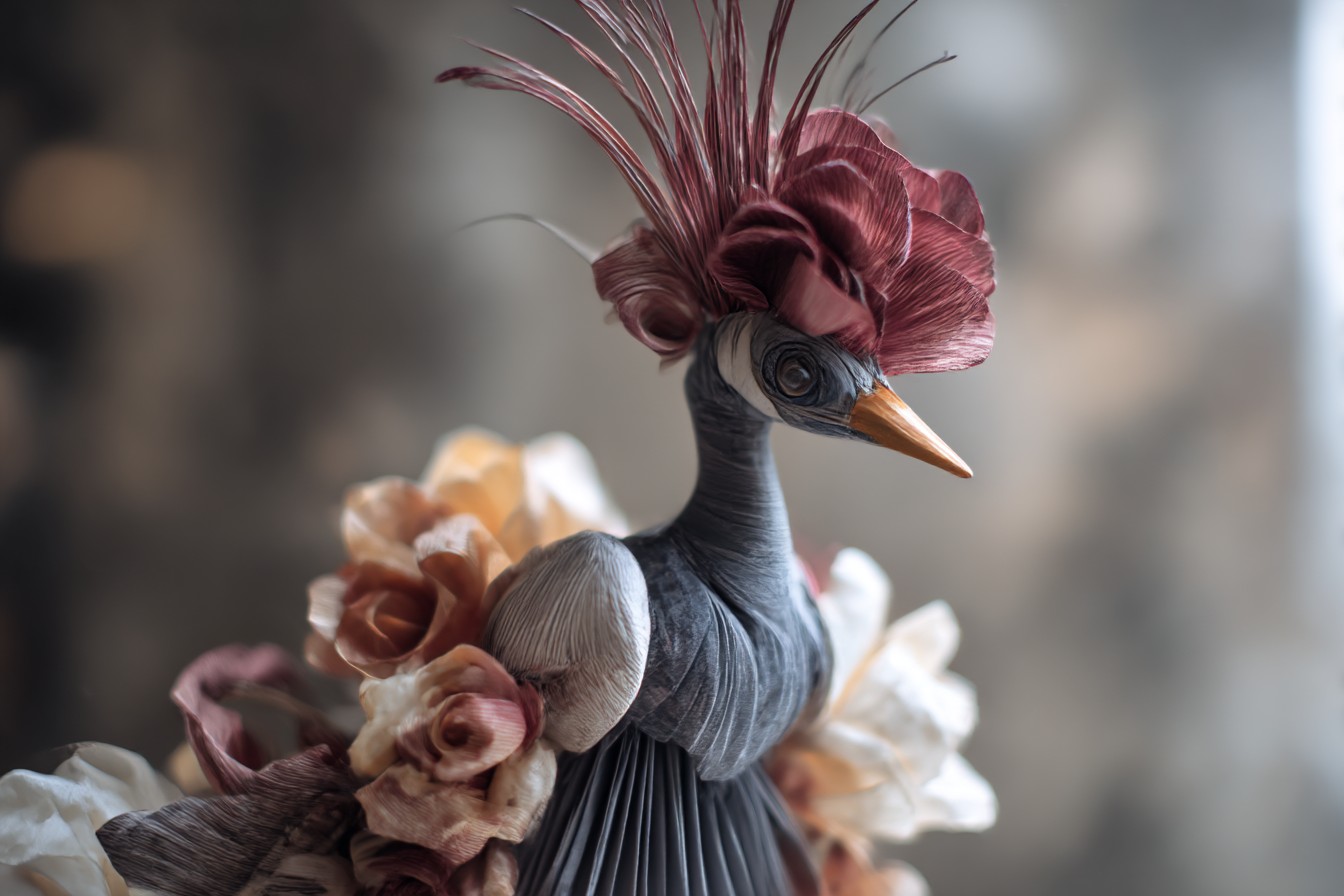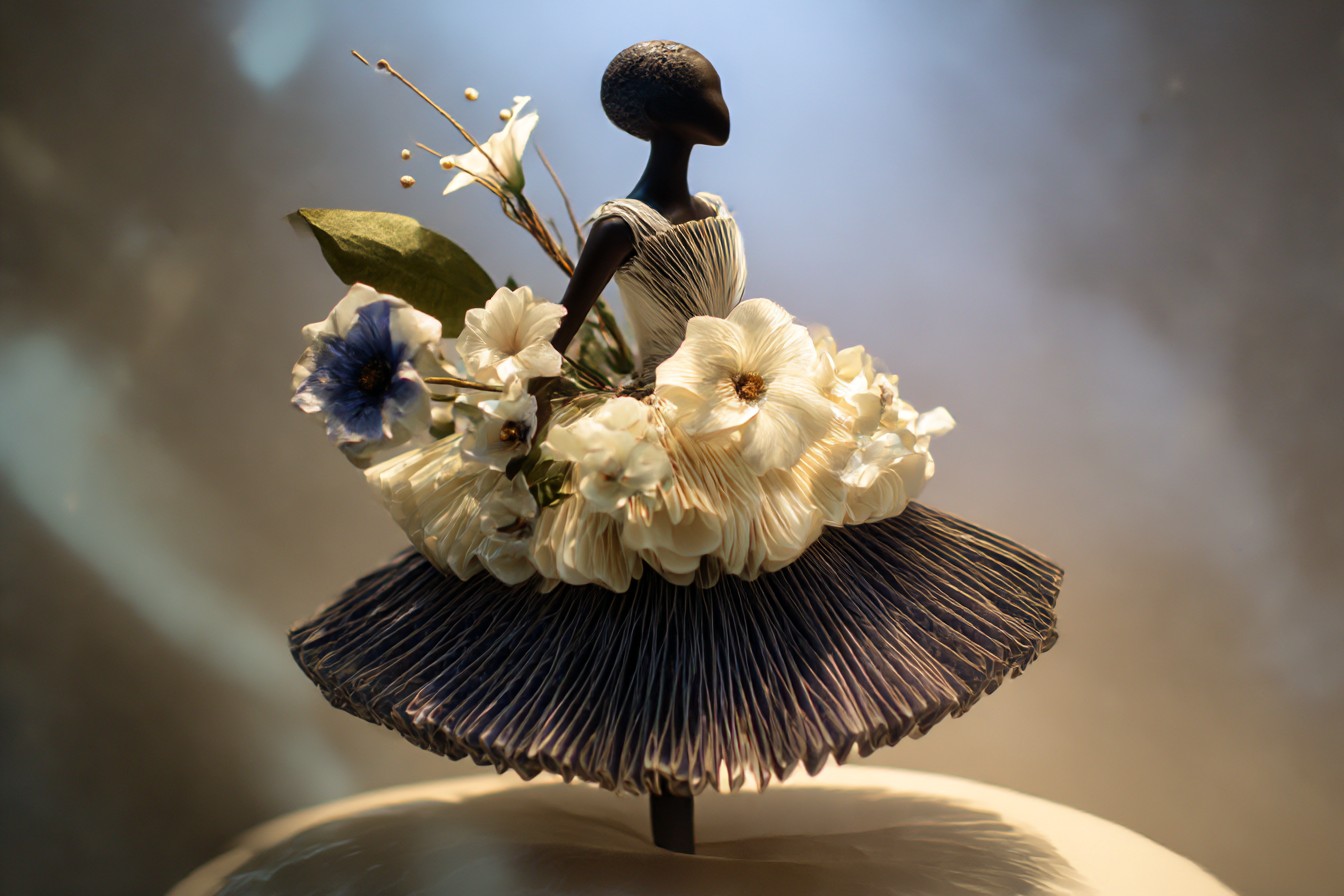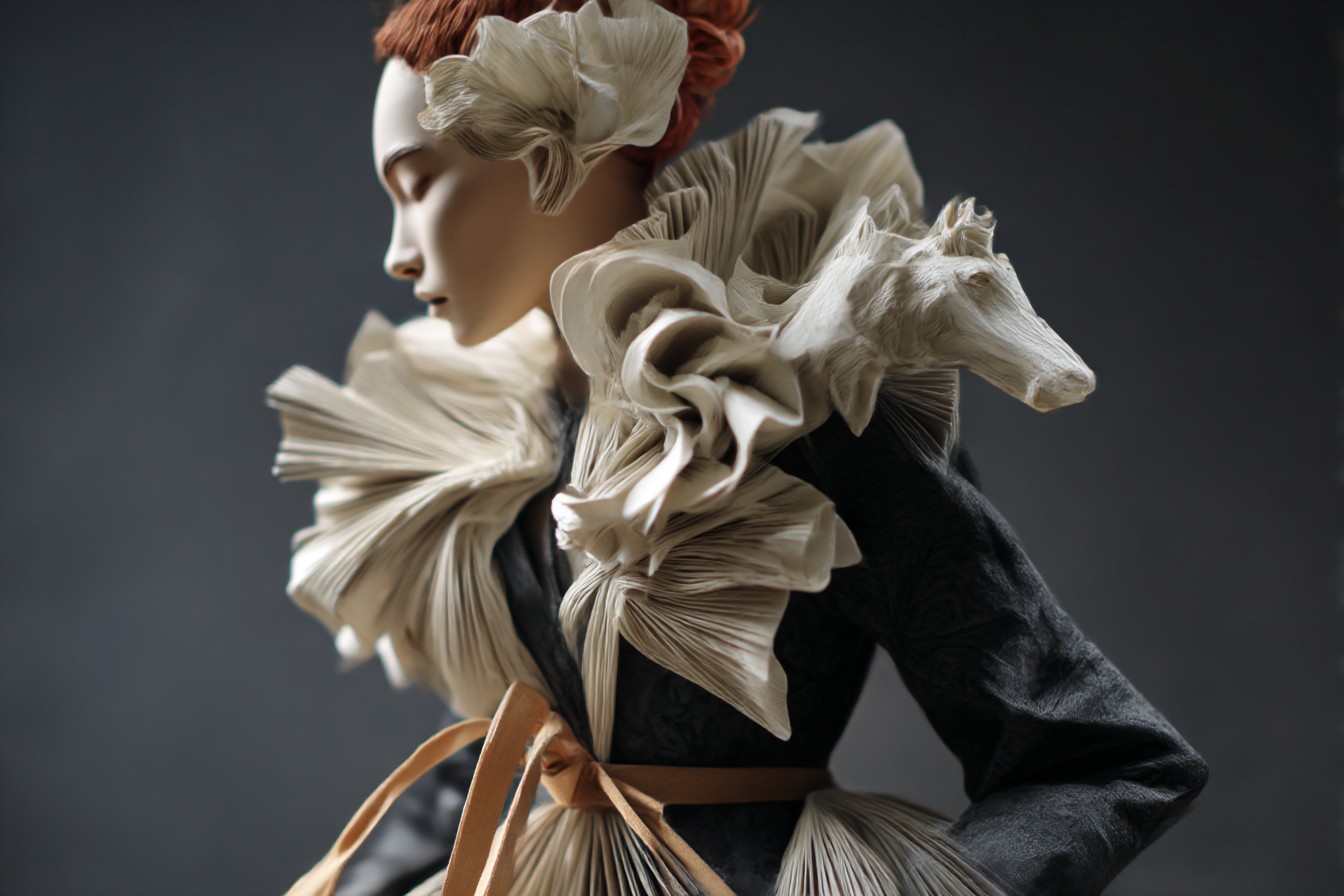The first handmade gift I remember giving was a disaster of such magnificent proportions that my family still references it two decades later. I was nine, armed with boundless confidence and precisely zero crafting skills, determined to make my father a bookmark for Christmas. Simple enough, you might think. But no—I had witnessed my artistic friend Lily making pressed flower bookmarks and decided this was clearly the only acceptable approach.
The execution, however, was problematic. Having no actual flower press (or patience to wait for one to work), I decided to speed up the process by microwaving the daisies I’d picked from our garden. The resulting scorched petals, hastily glued to construction paper and laminated with excessive sellotape, looked less “thoughtful handcraft” and more “evidence from a crime scene.” When Dad unwrapped it on Christmas morning, there was a moment of confused silence before he gamely declared it “the most unique bookmark” he’d ever seen.
To his eternal credit, he used that hideous bookmark for years until it literally disintegrated, blackened daisy fragments finally giving up their tenuous attachment to the backing paper. That early crafting trauma should have put me off handmade gifts for life, but instead, it sparked a complicated relationship with DIY presents that has evolved alongside the broader cultural attitude toward handmade giving.
We’re living through what I can only describe as a handmade gift renaissance, fueled by Pinterest boards displaying impossibly perfect mason jar creations, YouTube tutorials making complex crafts look deceptively simple, and a cultural push toward meaningful consumption over mass production. The message is clear: handmade gifts are more thoughtful, more personal, more authentic than store-bought alternatives. But this well-intentioned shift has created its own pressures and pitfalls that can transform what should be a joyful act of creation into a stress-inducing pursuit of unattainable perfection.
I’ve experienced this transformation firsthand. Throughout university, I made simple handmade gifts because, frankly, I was broke. Hand-bound notebooks with marbled paper covers. Batches of ginger biscuits presented in charity shop tins I’d decorated. Memory jars filled with inside jokes and photos for friends. These gifts weren’t perfect—the bookbinding was often wonky, the biscuits occasionally overdone—but they were created with genuine enthusiasm and accepted in the spirit they were given. There was an unspoken understanding that the slight imperfections were part of their charm.
Fast forward to the Pinterest era, and something fundamental shifted. Suddenly there were impossible standards to meet. It wasn’t enough to make jam as a gift; it needed to be presented in a perfectly uniform jar with a professionally designed label, accompanied by a handwoven basket and artisanal crackers. The goalposts for what constituted a “good” handmade gift moved dramatically, creating a strange paradox: handmade gifts were simultaneously more valued and more intimidating to attempt.
I remember the exact moment I realized how toxic this perfection pursuit had become. It was 3 AM on a December morning five years ago, and I was hunched over our kitchen table, surrounded by fabric scraps, frantically trying to finish handmade lavender sachets for my extended family. My eyes were burning, my fingers were pricked with needle marks, and I was fighting back tears of exhaustion and frustration because the stitching wasn’t as neat as the reference photo I’d saved. Charlie found me there, squinting in the poor light.
“Em,” he said gently, taking in the scene, “you know you can just buy people presents, right? Normal people do that all the time.”
His comment snapped something into focus. I had somehow internalized the idea that store-bought gifts were inherently less meaningful, less worthy. That to properly express affection, I needed to literally bleed for it (those needles were sharp). Somewhere along the way, the joy had leached out of the making, replaced by a grim determination to create something that wouldn’t look out of place on a lifestyle influencer’s Instagram grid.
That moment sparked a wholesale reconsideration of my approach to handmade giving, and over the years I’ve developed what I think is a healthier philosophy that balances the personal satisfaction of creating something by hand with the reality of limited time, varying skill levels, and the true purpose of gift-giving: meaningful connection.
The first principle of this new approach is radical honesty about my own skills and limitations. I am, objectively speaking, quite good at certain types of baking, decent at simple bookbinding, and absolutely hopeless at anything involving a sewing machine. Acknowledging these truths helps me choose handmade projects that play to my strengths rather than setting myself up for frustration by attempting crafts beyond my ability. There’s no shame in recognizing that some beautiful handmade items are better left to people who have developed those particular skills.
This doesn’t mean never trying new techniques—I’m all for creative expansion—but perhaps experimental crafts shouldn’t debut as holiday gifts with firm deadlines and high emotional stakes. My living room still bears the scars of my brief, disastrous foray into woodburning picture frames that I ill-advisedly attempted two days before my mother-in-law’s birthday. Some skills deserve the dignity of a practice period before their results are wrapped and presented.
The second principle is building realistic time buffers. Handmade gifts almost always take longer than you think they will, often dramatically so. That charming “quick weekend project” on Pinterest was likely created by someone with years of experience and all the necessary supplies already organized in their dedicated craft room, not by someone like me who has to hunt for scissors for 20 minutes before even starting. I’ve learned to estimate my crafting time, then triple it—and even then, I often cut it fine.
Last year, I decided to make specialized cocktail bitters as Christmas gifts for a few close friends who share my appreciation for a good Old Fashioned. The actual hands-on time was minimal, but the infusion process took weeks. By starting in October (instead of mid-December, as my past self would have done), the project remained enjoyable rather than stressful, and I had time to adjust recipes that weren’t working out as planned.
The third principle, and perhaps the most important, is remembering that the value of handmade gifts lies in their personal nature, not their perfection. When my friend Sophia had her first baby last year, I knitted a small blanket for the new arrival. My knitting skills are intermediate at best, and there’s a section near one corner where I clearly lost count of my stitches and had to improvise a fix. I almost started over when I noticed it, but then thought better of it. That small imperfection carries something of the authentic experience of making—the late nights, the learning curve, the problem-solving on the fly. It’s a record of human hands at work, not a machine’s uniform output.
When I gave it to Sophia, I briefly pointed out the mistake, not as an apology but as a recognition of the blanket’s handmade nature. “That’s the bit that makes it special,” she said, running her fingers over the uneven stitches. “It wouldn’t be a proper handmade gift if it was perfect.” Her comment crystallized something I’d been feeling: perhaps we’ve misunderstood what makes handmade gifts meaningful. It’s not their flawlessness, but rather their humanity—the visible evidence that someone spent time creating something specifically for you, thinking of you throughout the process.
This perspective shift has transformed my relationship with handmade giving. I now see the slight variations, the small fixes, the not-quite-symmetric elements not as failures to be hidden but as the very features that distinguish a handmade gift from a mass-produced item. They’re signatures of authenticity, not flaws to apologize for.
That’s not to say we shouldn’t try our best or develop our skills. There’s immense satisfaction in improving our craftsmanship and creating handmade items with increasing finesse. But the pursuit of improvement should be motivated by personal satisfaction and the joy of making, not by anxiety about measuring up to impossible standards set by professional crafters or curated social media feeds.
I’ve also become more selective about when and for whom I make handmade gifts. Some occasions and relationships call for the extra personal touch of something made by hand. Others are better served by finding the perfect item that aligns with the recipient’s needs or desires, even if it comes from a shop. There’s no inherent moral superiority in handmade giving—it’s just one approach among many valid ways to show thoughtfulness.
When I do choose the handmade route, I try to match the project to the specific relationship. For my friend David, who appreciates food but is spectacularly unconcerned with visual presentation, I make annual batches of incredibly delicious but rather homely-looking chocolate truffles. They would never make it onto a food styling Instagram, but he cares about flavor, not appearance, so they’re perfect for him. For my aesthetically minded colleague Jasmine, I select handmade projects where I can achieve a level of finesse that will resonate with her design sensibility—like marbled paper notebook covers that play to my strengths.
This more balanced approach has reintroduced joy into the making process. When I’m not trying to compete with professional-level crafts I see online, when I’m creating with a specific person in mind rather than an abstract standard of perfection, the act of making becomes meditative and connecting rather than stressful. I find myself thinking about the recipient as I work—memories we share, things they’ve said, what I value about them. This mental connection during the creation process infuses the gift with meaning that has nothing to do with how flawless the end product appears.
I’ve also found that being transparent about the making process often deepens the recipient’s appreciation of the gift. Including a note that shares something about why I chose that particular project for them, challenges I encountered, or what I enjoyed about creating it adds a layer of storytelling to the giving. “These vanilla beans were an absolute nightmare to source during lockdown” becomes part of the gift’s provenance, a small shared joke rather than something to conceal.
The handmade renaissance has brought many positive changes—a renewed appreciation for craftsmanship, support for maker economies, more sustainable giving options. But like any cultural shift, it requires thoughtful navigation to extract the benefits without succumbing to its pitfalls. Finding the balance between aspiration and authenticity, between effort and enjoyment, is key to making handmade giving a sustainable practice rather than a path to burnout.
Perhaps the most valuable lesson I’ve learned is that perfectly imperfect handmade gifts create space for a more human exchange. When I present something clearly made by fallible human hands, it invites a different kind of receiving—one where the recipient doesn’t have to perform perfect gratitude or pretend the gift is flawless. There’s room for genuine appreciation of the effort and thought while acknowledging the human limitations we all share.
My father still mentions that awful microwave-scorched daisy bookmark from time to time, usually at Christmas gatherings when we’re exchanging gifts. What’s striking is how his retelling has evolved over the years. It’s no longer just a funny story about a child’s crafting disaster; it’s become a tale about persistence, about the courage to create something and share it proudly despite limited skills, about the value of receiving with genuine appreciation rather than judgment. In his telling, that objectively terrible bookmark has been transformed into something meaningful—not despite its imperfections but because of the authentic connection they represent.
And perhaps that’s the true promise of the handmade gift renaissance, if we can resist the perfectionism trap: not flawless creations that mimic professional production, but authentic exchanges that honor the beautiful messiness of human connection. So go ahead—make the slightly lopsided pottery, bake the cookies that don’t quite match the picture, knit the scarf with the visible join where you added a new ball of yarn. Give these imperfect treasures proudly, with notes that share your process rather than apologize for the results. These aren’t compromises or failures; they’re the most authentic expressions of handmade giving, carrying within their slight imperfections the true gift: evidence of human hands and the heart that guided them.





Leave a Reply